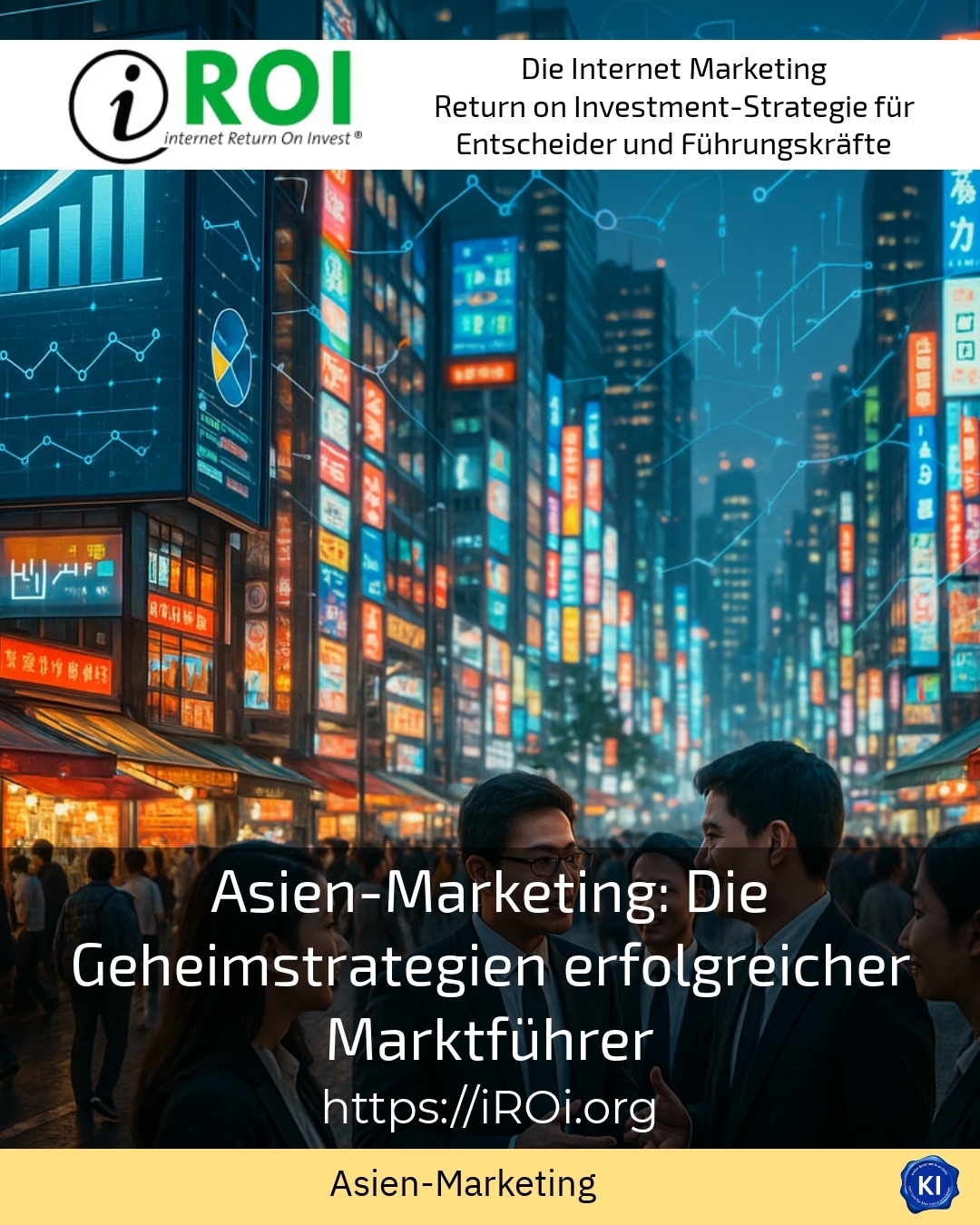The topic of Asia marketing is becoming increasingly important for companies with global ambitions. The Asia-Pacific region, characterised by a dynamically growing middle class and diverse cultures, is one of the strongest economic engines in the world today. This is precisely why a sound understanding of the Asian markets is essential in order to achieve sustainable success there. In the following, we highlight the secret strategies of successful market leaders who have been able to consolidate their position in the complex and heterogeneous Asian region.
Fundamentals for effective Asia marketing
If you want to utilise the opportunities offered by marketing in Asia, you must always take into account the enormous diversity of the region. Consumer habits in China, Japan or South Korea differ greatly from those in South East Asia, for example in countries such as Vietnam or Malaysia. Leading companies therefore rely on customised, country-specific strategies instead of standard solutions.
An important success factor is professional and authentic communication in the local language. For example, a specialist for packaging machines has been implementing a combination of AI-supported translation and local native speakers for years in order to tailor marketing materials precisely to the Chinese market. The customer magazine is also designed in partial editions specifically for the Chinese and Japanese markets in order to convey culturally relevant content[1].
The use of country-specific digital platforms is an example of good market specificity. In China, WeChat and Baidu dominate as social and commerce channels, while networks such as KakaoStory and Naver have the greatest reach in South Korea. Companies that neglect this focus quickly lose visibility and trust among their target groups[3].
Key strategies of successful market leaders in Asia marketing
Successful companies in Asia rely on five key pillars to increase their brand awareness and sales:
- Social commerce and inbound marketing via regional platforms such as WeChat
- Targeted use of country-specific social media channels for brand loyalty
- Content marketing with well-known influencers from the respective region as trust anchors
- Use of typical national occasions or holidays as communication events
- Mobile-first approaches, as many consumers primarily use their smartphones
This is how an international mechanical engineering company successfully brings its products to market in Korea and China. The focus on digital channels, supplemented by local events and promotions, significantly improves customer proximity[3].
BEST PRACTICE with one customer (name hidden due to NDA contract)
The client from the medical technology sector realised a regional market entry strategy for Southeast Asia in cooperation with our transruptions coaching. Customised social media campaigns and targeted content production on local platforms significantly increased brand awareness within a year. This led to more sustainable customer loyalty in Vietnam, Thailand and Malaysia.
Local culture and communication as a key factor
Another secret strategy is the detailed consideration of cultural characteristics. Asian markets are characterised by a particularly high degree of diversity, which leads to major differences even within regions such as ASEAN. For example, the political and economic conditions in Singapore are characterised by a high degree of stability, while other countries in the region such as Myanmar or Cambodia still have development potential, but also harbour risk factors[4].
Companies that conduct such a study of their target markets adapt their marketing content and brand messages to local values and expectations. This applies not only to language, but also to imagery, product benefits and pricing strategies. An experienced transruptions coaching project often accompanies the implementation and ensures an agile, iterative adaptation of communication.
Another example is innovation leaders from the automotive industry who explicitly tailor their new products to the needs of Asian consumers. In Japan and South Korea, for example, the focus is on electromobility solutions and digital connectivity in vehicles - a field that is technically highly developed and very popular there[6].
Practical tips for companies marketing in Asia
In order to effectively support projects in Asia, the following impulses are recommended:
- Use regional clusters: Open up markets step by step, for example Greater China first, then South East Asia. This creates an overview and reduces risks[7].
- Build local teams: Trusting collaboration with local experts is essential to overcome cultural and regulatory barriers.
- Customise digital infrastructure: Optimise web platforms and e-commerce for regional specifics.
- Use influencers as multipliers: Authenticity wins users, especially among younger target groups[13].
- Analyse market data regularly: Stay agile and react to changing trends and competitive situations.
Last year, a marketing agency supported European hideaways from the tourism sector in establishing a digital presence in Asia. Thanks to differentiated content strategies and targeted social media marketing, they were able to substantially increase their sales in Japan, Korea and China[6].
My analysis
When it comes to marketing in Asia, the key to success lies in a combination of local sensitivity, digital expertise and strategic planning. Companies that rely solely on standardised solutions often miss out on great opportunities. Rather, accompanying consulting and agile implementation support the sustainable development of complex markets and the creation of competitive advantages.
The Asian economic region offers outstanding potential for German SMEs and hidden champions in particular - provided their marketing strategies take account of regional characteristics and promote long-term customer relationships. The targeted use of language and cultural specialists, digital platforms and social trends rounds off the picture of success.
Further links from the text above:
Marketing in China - communicating authentically [1]
Korea and Japan: sales markets of the future [2]
5 strategies for market entry in Asia [3]
China+1 strategies - Alternative sales markets [4]
Asia-Pacific Marketing (APAC) [5]
Tapping into new growth opportunities in Asia [6]
Business in Asia - Understanding diversity [7]
80 % of social media users in Asia follow influencers [13]
For more information and if you have any questions, please contact Contact us or read more blog posts on the topic internet Return on Investment - Marketing here.
















